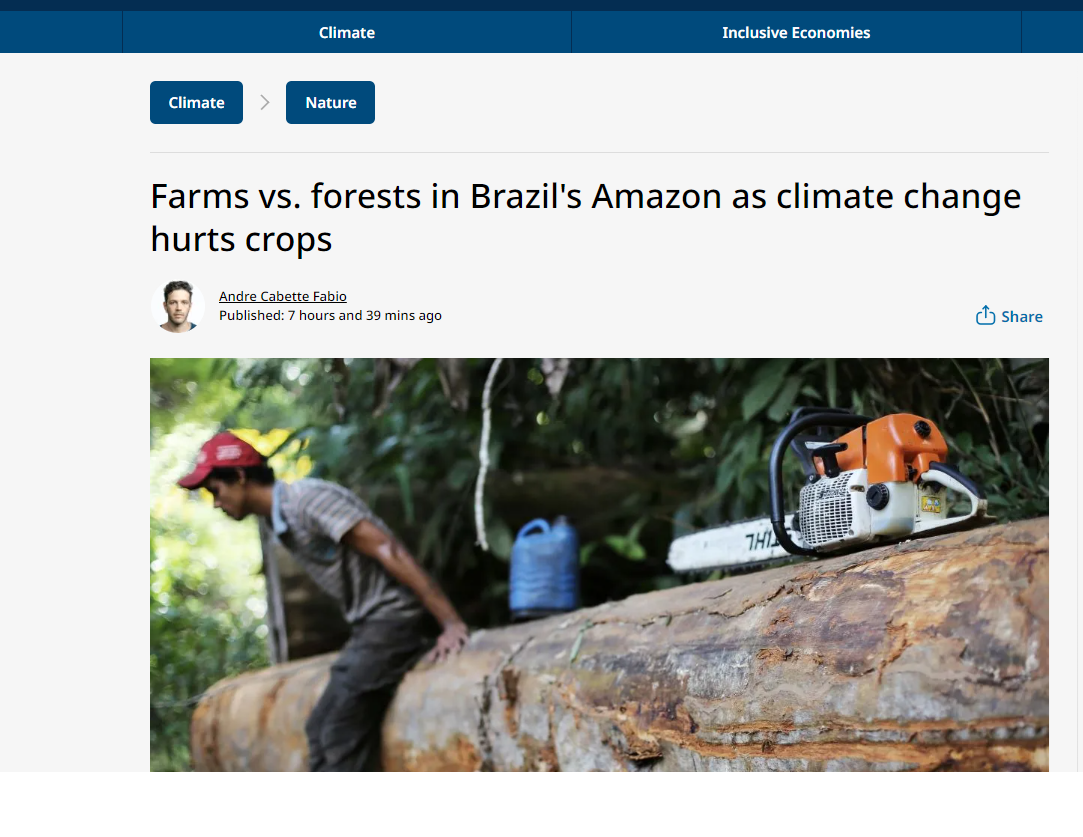
As drought and floods wreak havoc across Brazil, farmers are feeling the effects of the climate emergency but despite poor harvests and rotting crops, they are fighting to protect their right to fell more trees and convert grasslands.
The southern Rio Grande do Sul state offers a clear example of the damage wrought by consecutive disasters: after prolonged droughts, analysts were predicting a record soybean harvest this year but instead the area was hit by devastating floods in June.
Around 170 people were killed and half a million people were driven from their homes. The floods also wiped out crops, with farmers predicting a drop of up to 15% in the soybean harvest in the world’s top grower.
“I now have debt from the droughts and from last year’s crop,” said Graziele de Camargo, a soy and wheat producer in São Sepé municipality who had invested heavily to try to make up for previous losses.
“But I haven’t reaped anything,” said Camargo, a leader of the SOS Agro movement, which is seeking financial help from the government to cope with the effects of the climate crisis.
Farmers are also under pressure in Brazil’s midwest, a grains powerhouse, and in the north where drought has damaged crops while wildfires have also raged. And they are bracing for more fires over the coming months.
Last year’s drought was the most severe on record in the Amazon. River levels fell sharply, disrupting shipments of grain for export.
Nova ferramenta do Observatório do Código Florestal acompanha tramitação e classifica propostas com impactos na principal legislação ambiental do país […]
Lei central da política ambiental brasileira, o Código Florestal ainda enfrenta desafios críticos para sua plena aplicação — indispensável para […]
O Observatório do Código Florestal (OCF) procura um(a) consultor(a) — pessoa jurídica — pleno de Comunicação para o desenvolvimento e […]
Davi Alcolumbre emplaca emenda que permite simplificar licenciamento de petróleo e mineração. Alterações serão analisadas agora pela Câmara Sob a […]